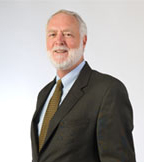 G. Wayne Clough, secretary of the Smithsonian Institution since July 2008, has given another interview, this time to the Associated Press. And for at least the third time, he hasn’t said much about art at the Smithsonian. In fact, the 19 museums he oversees are barely mentioned in the articles, and when one is it’s often the Air & Space Museum or the National Museum of American History.
G. Wayne Clough, secretary of the Smithsonian Institution since July 2008, has given another interview, this time to the Associated Press. And for at least the third time, he hasn’t said much about art at the Smithsonian. In fact, the 19 museums he oversees are barely mentioned in the articles, and when one is it’s often the Air & Space Museum or the National Museum of American History.
This is starting to be worrisome.
In the latest interview, Clough puts a little meat on themes he has mentioned in the past. For example, he says he has secured a $1.3 million gift that will allow him to hire a Smithsonian-wide education director, with a particular focus on K-12 curriculums. He’s working to forge a research collaboration deal with the University of Maryland and has done a deal with George Mason University to pair students with researchers at the National Zoo. Climate change, education and immigration remain his priority issues.
Clough also repeated a theme he has made in speeches — that he wants to use technology to share the Smithsonian’s 137 million artifacts and specimens with the public. Well, at least that references the art museums. In July, he told the National Press Club that he would soon hire “a new media person who will capture the creativity going on across the Institution” for posting on YouTube.
Clough seems to be operating with a policy of benign neglect toward the art museums; he is, after all, a science-engineering guy. For that to work, the museums need strong leadership — and perhaps aggressive leadership. Clough has embarked on a $1 billion capital campaign, and the art museums need some of that money, too. If Clough’s head is elsewhere, what happens to the art?
Here’s a link to the AP article, and, if you want to refresh your memory, to the New York Times and Washington Post articles from a year ago.
The Smithsonian’s Board of Regents holds its annual public meeting on Sept. 21 — details are here. It’s seeking questions and comments — send to comments@si.edu. It’s time to pin Clough down on art, and if reporters aren’t doing it, others may have to.
Photo: Courtesy of the Smithsonian Institution
